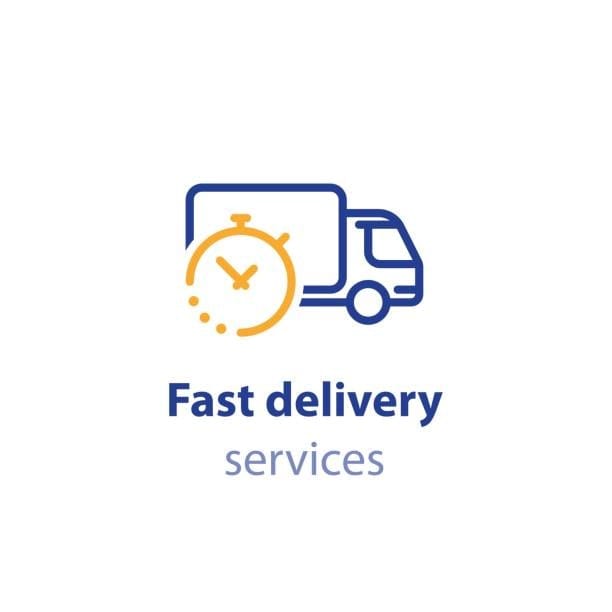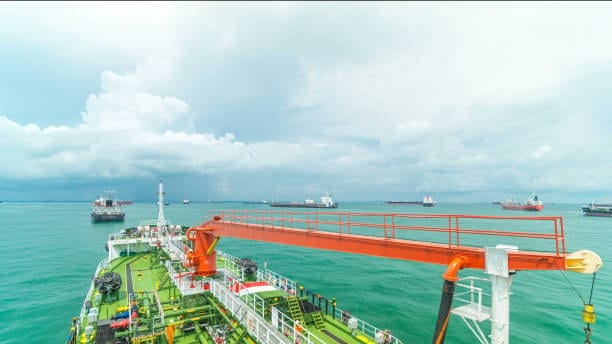Introduction
In terms of international trade Canada and the U.S. have the busiest cross-border shipping connection in the world. The shipping relationship between Canada and the United States needs clear time information because $2 billion worth of goods move across this border every day. This article looks into the elements that determine shipping delays between Canada and the United States through evaluation of transportation choices along with customs clearance requirements and regional access in international shipping .
Typical Shipping Timeframes

The shipping time between Canada and the United States depends on different important factors. Packages usually need 3 to 10 business days for delivery between Canada and the United States, affecting delivery time .
- Standard Ground Shipping: 3-10 business days
- Expedited Ground Services: 2-5 business days
- Express Air Services: 1-3 business days
- Same-Day Air: Available for select urban locations along the border
Basic Shipping Methods

Ground Transportation Options
Shippers can send their packages from Canada to the USA at lowest cost through ground transportation networks, influencing shipping costs . USPS and Canada Post plus major delivery services FedEx and Purolator send parcels by ground with shipping times of 3-10 days based on the package distance.
Air Transportation Services

You can send your packages by air quickly through various shipping services, and you will need to pay more for the service, including options for shipping insurance. Express air services send packages to any U.S. location within 1 to 3 business days but next-day shipments serve urgent delivery needs.
Regional Variations

Eastern Canada to Eastern U.S.
Ground and air shipment routes between Eastern Canada provinces and the Eastern United States take 2-4 days for ground transport and 1-2 days for air transport because of their close distance and robust infrastructure.
Central Canada to Central U.S.
Express shipping connects Central Canada to the Midwest part of the USA and completes its journey in just 3 to 6 days when using ground transportation and 1 to 2 days with air courier services.
Western Canada to Western U.S.

Although the western mountains affect routing, traveling between Western Coast cities remains fast at 1-3 days by ground and 1 day by air, generally considering the weight of packages.
Cross-Country Shipping Challenges
Packages that start in Vancouver destined for Miami and Halifax bound for Los Angeles must travel by land for 7 to 10 business days or via air for 2 to 3 business days.
Customs Clearance Process

Documentation Requirements
Accurate document submission reduces how long customs needs to process shipments. Shipping needs all necessary papers including commercial invoices, certificates of origin, shipping labels and shipping receipts plus government permits when dealing with controlled items.
Customs Processing Timeframes

Normal customs procedures complete express shipments in 2 to 24 hours and standard commercial shipments in 24 to 72 hours. Delays occur when handling regulated or difficult-to-clear items and need 3 to 10+ days.
Pre-Clearance Programs
Qualified exporters can use FAST Free and Secure Trade alongside ACI Advance Commercial Information and CSA Customs Self-Assessment to speed up their customs handling.
Major Carriers

Canada Post/USPS Partnership
The joint company of Canada Post and the US Postal Service gives customers shipping choices between Small Packet USA Air (5-8 business days) and Priority Worldwide USA (2-3 business days).
FedEx Cross-Border Services
FedEx provides several service levels for Canada-U.S. shipping, from FedEx International Ground (2-7 business days) to FedEx International First (next business day delivery to select U.S. locations by 10:30 AM).
UPS Shipping Options
FedEx delivers your shipment from Canada to the US using their International Ground service in 2-7 business days and their International First service which gets your package to certain destinations in the US the next working day before 10:30 AM.
DHL International Services

UPS provides two major cross-border shipping choices: UPS Standard which delivers between 3-7 working days and UPS Worldwide Express Plus which delivers packages to certain locations by 8:30AM the next day.
Seasonal Factors

Winter Weather Impacts
Winter precipitation along Great Lakes borders slows interstate shipping by one to three days from December to March.
Spring Thaw Considerations

Areas in Great Lakes regions and water crossing points deal with shipping issues due to the flooding that blocks essential transportation areas during spring thaw.
Summer Hurricane Season
Shipping from Atlantic provinces to southeastern US states encounters delays during June to November due to hurricanes that muddy road networks.
Fall Holiday Rush
Both Canada and the United States witness increased shipping loads and potential delays due to holiday shopping between October and December every year, often influenced by duties and taxes .
Border Crossing Factors

Major Border Crossing Points
Most active border checkpoints such as Ambassador Bridge (Windsor-Detroit), Peace Bridge (Fort Erie-Buffalo), and Pacific Highway (Surrey-Blaine) handle cargo faster except when peak hours cause delays.
Rural Border Crossings

Fewer crossed at these minor roads creates speedier transit times though staff reduction forces added delivery delays.
Border Congestion Periods
The processing times at large border crossings vary due to heavy traffic during holidays and as month ends approach.
Geographic Considerations

Remote Destination Effects
Packages to rural US destinations normally need one to three extra days beyond estimated shipping schedules, particularly when seeking cheap shipping rates .
Mountain Pass Challenges

Deliveries going through high-elevation mountain passes such as the Rocky Mountains and Cascade Range might experience delayed shipping schedules during weather-sensitive seasons.
Urban Center Advantages
Major cities receive fast delivery service and direct transportation connections which speed up shipping from start to finish.
Special Shipping Categories

Regulated Item Processing
Unique product types need specific shipping procedures that make deliveries take longer. Food shipments need inspecting steps that add one to three days while alcohol needs special permits and takes three to seven more days to deliver.
Oversized Shipment Handling

Packages of large size or weight need at least five to 14 business days of shipping through freight services depending on how far they go and which service level you choose.
High-Value Item Security
Higher value items need both better protection operations and document proofing that delays delivery.
Holiday Impact

Canadian Holiday Schedule
Canadian public holidays impact the functioning of pickup services and cross-border operations at important national celebrations.
U.S. Holiday Schedule
U.S. federal holidays stop delivery services and customs offices all year but especially on New Year’s Day, Independence Day, Labor Day, Thanksgiving, and Christmas.
Combined Holiday Effects
Business operations across both nations slow down when holidays pile up or come right behind each other, especially during late December, affecting their shipping policy.
Optimization Strategies

Carrier Selection Tactics
Major courier companies deliver packages best through their areas of expertise with FedEx and UPS speed ahead for urgent needs compared to cost-effective services from Canada Post/USPS partnership.
Documentation Preparation
Getting customs clearance faster requires companies to adopt standard packaging styles plus submit flawless customs documents alongside ready-to-use shipping labels.
Strategic Shipping Locations
Shipping times depend heavily on the Canadian shipping location because origins near major entry points to the USA expedite customs processing.
Technology Utilization
Today’s shipping tools monitor package location better and notify about shipment issues by listing shipping events and processing auto updates in customs.
Recent Developments

Supply Chain Innovations

Modern customs automation systems speed up customs processing by half when handling shipments.
Infrastructure Investments
Border security has improved because both nations added new facility space at their busy international gates while upgrading their customs technology.
Regulatory Evolution
The USMCA (United States-Mexico-Canada Agreement) now determines how business operators must work with new trade agreements and government rules when shipping between these countries.
Industry-Specific Considerations

E-commerce Shipping Standards
Online sellers normally provide three shipping choices for orders from Canada to the USA with these basic services: economy (takes 5-10 days), standard (3-7 days) and fast delivery (arrives in 1-3 days).
Manufacturing Supply Chain Timing

Businesses following just-in-time production depend on specific shippers who deliver products on time and promise exact shipment windows between Canada and the United States.
Medical and Pharmaceutical Transport

The transportation methods used for healthcare deliveries include temperature-controlled validated shipping combined with fast customs processing which enables shipment delivery within 1 to 3 days.
Fashion and Apparel Logistics
High-value fashion products from designers need fast transit to the United States through air transportation due to their seasonal or trend-sensitive nature.
Cost vs. Speed Considerations

Economy Shipping Value
For standard ground shipping customers receive the best cost-benefit when ordering slowly-delivered items since this method charges 30-70% less than express options with regular delivery times at 5-10 days.
Mid-Range Service Options

Customers can receive their packages in 2 to 5 days with expedited ground shipping by paying a reasonable extra cost on top of basic rates shipping label.
Premium Delivery Services
Customers can receive package deliveries within one to three days by choosing this effective service yet face premium charges that run between double and quadruple regular shipping expenses.
Future Trends

Technology Integration
Modern technology in tracking and customs makes shipping faster which may decrease delivery timelines by as much as half in future years cheapest shipping options
.
Sustainability Initiatives

Companies searching for carbon-free shipping approaches can change shipping routes which in turn affects shipment speed.
Cross-Border E-Commerce Growth

Customers who want their packages sent quickly make businesses upgrade logistics systems between key Canadian and American metropolitan areas post office.
Conclusion
This Canada-US shipping route leads all other cross-border trade systems in efficiency, with shipping delays influenced by several different elements, including regulations set by the federal government. E-commerce growth and faster delivery demand push shipping companies to use their investment to speed up shipment processes international shipping services. Knowing shipping factors allows logistics managers to better plan and run effective cross-border operations which strengthens trade between the United States and Canada cheapest shipping. Deciding what shipping level to use depends on urgency and route to deliver goods across borders as efficiently as possible expected delivery date.




